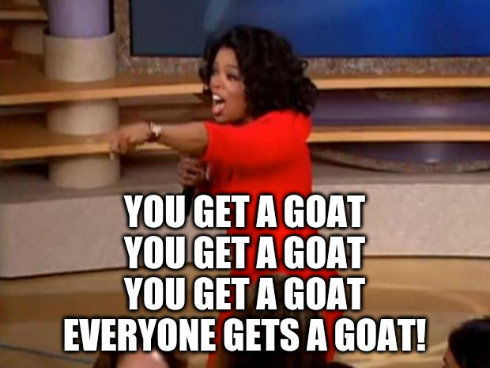To roll a 4 or higher on 2d6 is 33 chances out of 36. That’s 11/12.
To roll a 2 or higher on 1d12 is 11 chances out of 12. That’s 11/12.
I used those specific numbers for a reason. You will go down a path of madness and despair if you try to equate 2d6 with 1d12 in a general sense. That’s not what I was trying to say or show.
When you need a 4 or higher on 2d6, it matters not if it is a bell curve or a pyramidal distribution or anything in between. All that matters for that roll is the 11/12 chance you have of making it. At that point, you could ignore the d6s, pick up a d12, and hope not to roll a 1. The gods of probability will not care.
What matters is how the system derives that target number: 4 on 2d6 or 2 on 1d12.
Let’s shift the number up by 1 and see what happens. 5 or higher on 2d6 is 30/36 or 10/12. Hey, that’s the same as 3 or higher on 1d12.
Let’s shift the number up by another 1 and see what happens. 6 or higher on 2d6 is 25/36, but 4 or higher on 1d12 is 9/12 or 27/36. Because 2d6 is not flat, that additional +1 had a greater effect on the 2d6, making the odds worse.
Some people like the consistent predictability of a flat die distribution. If you’re playing Runequest or D&D, you know that a +20% or a +4 to your skill will shift your odds by 20%.
Personally, I like the effect that a curved distribution brings, but the odds are not transparent. I’m using the simple case of 2d6*, but it gets really wonky when you add in things like rolling 3d6, but discard the lowest. Or 3d6, but add another die for every 6. Or 3d6, taking the single highest die or the sum off doubles or triples. Or use multiple types of dice with different outcomes, like Genesys.
Sometimes game designers just come up with a die system they think is cool, damn the statistics. There is a quirk in Savage Worlds where you are 2% more likely to hit a target number of 6 if you have a skill of d4 rather than a skill of d6. This really bugs some people. I don’t worry about it because the default target number is 4 (where the d6 has a clear advantage) and you are more like to “get a raise” (major success) rolling the d6.
OK, now I’ve completely lost the thread. I could ramble on like this for pages.
(*) The fact that I have this distribution memorized is one of the reasons I refuse to play craps: the house edge is fully transparent.
